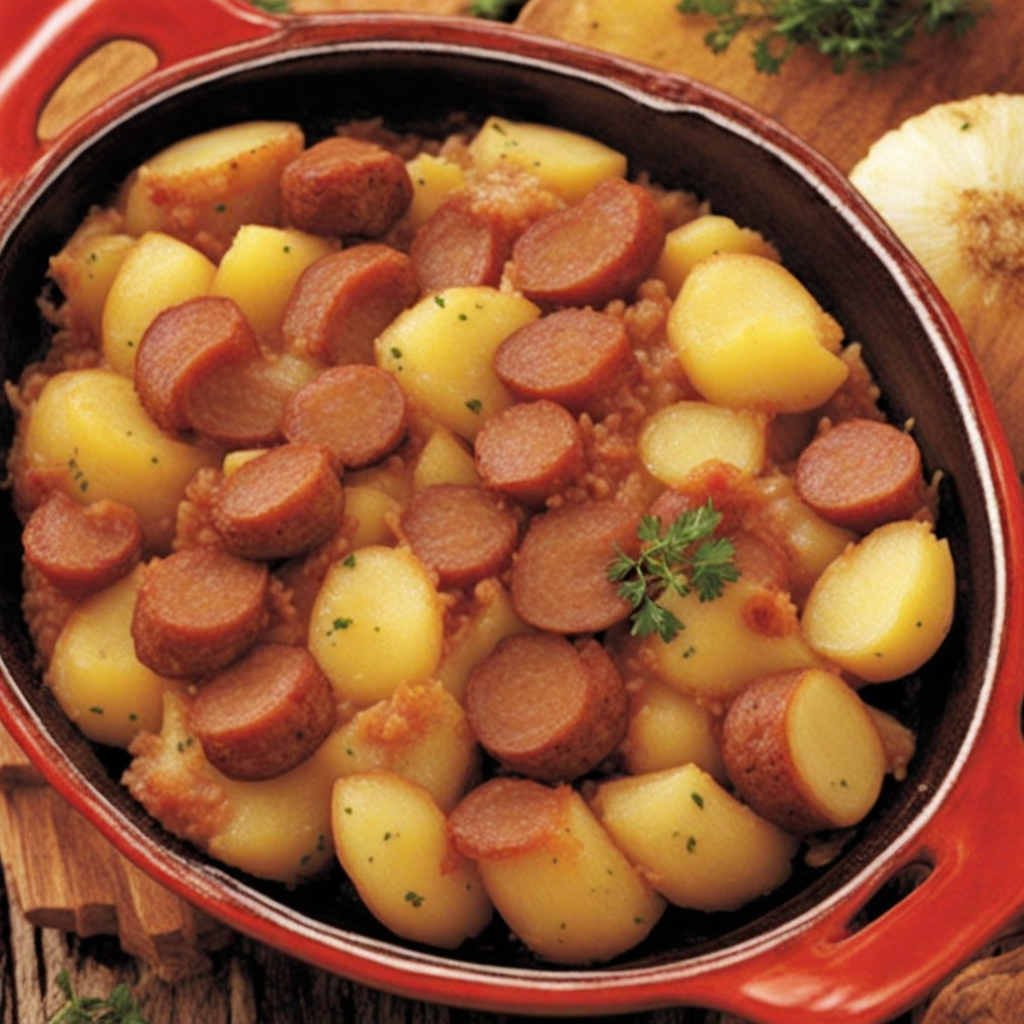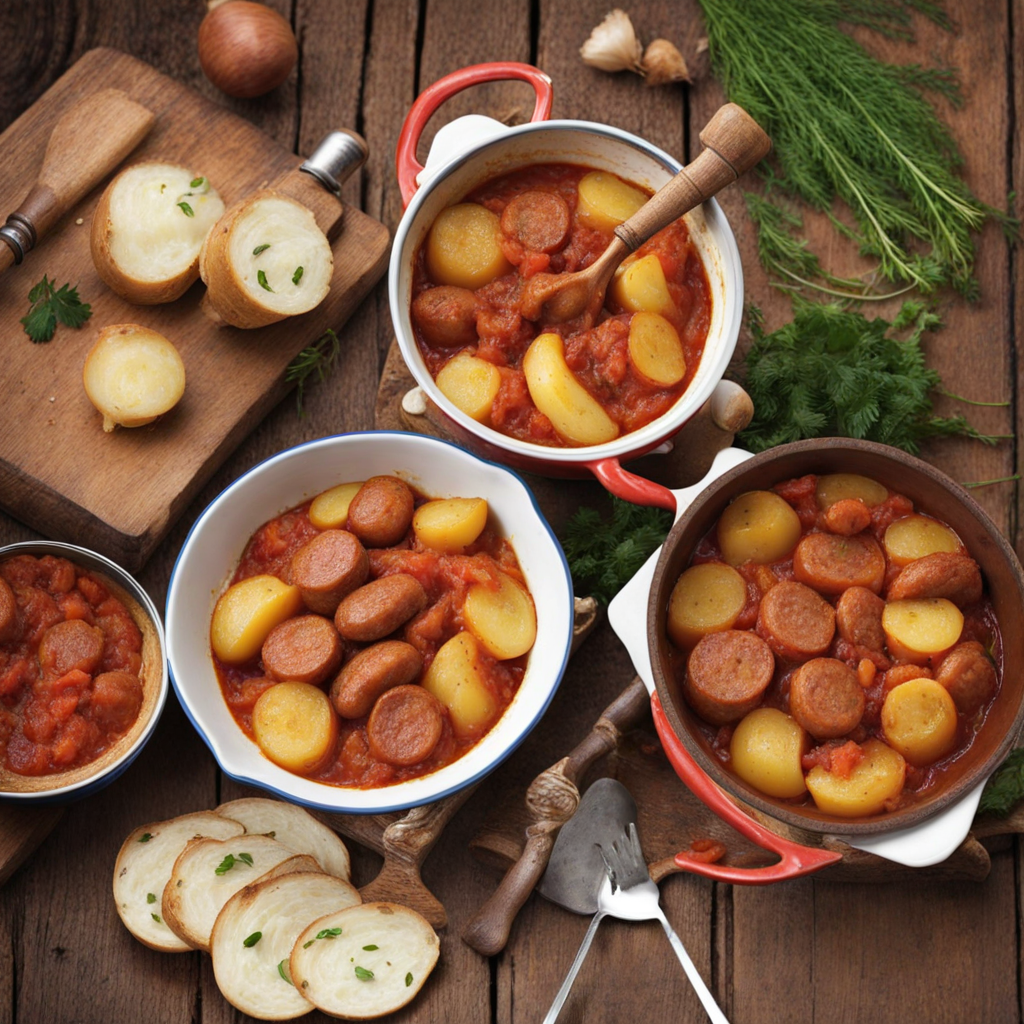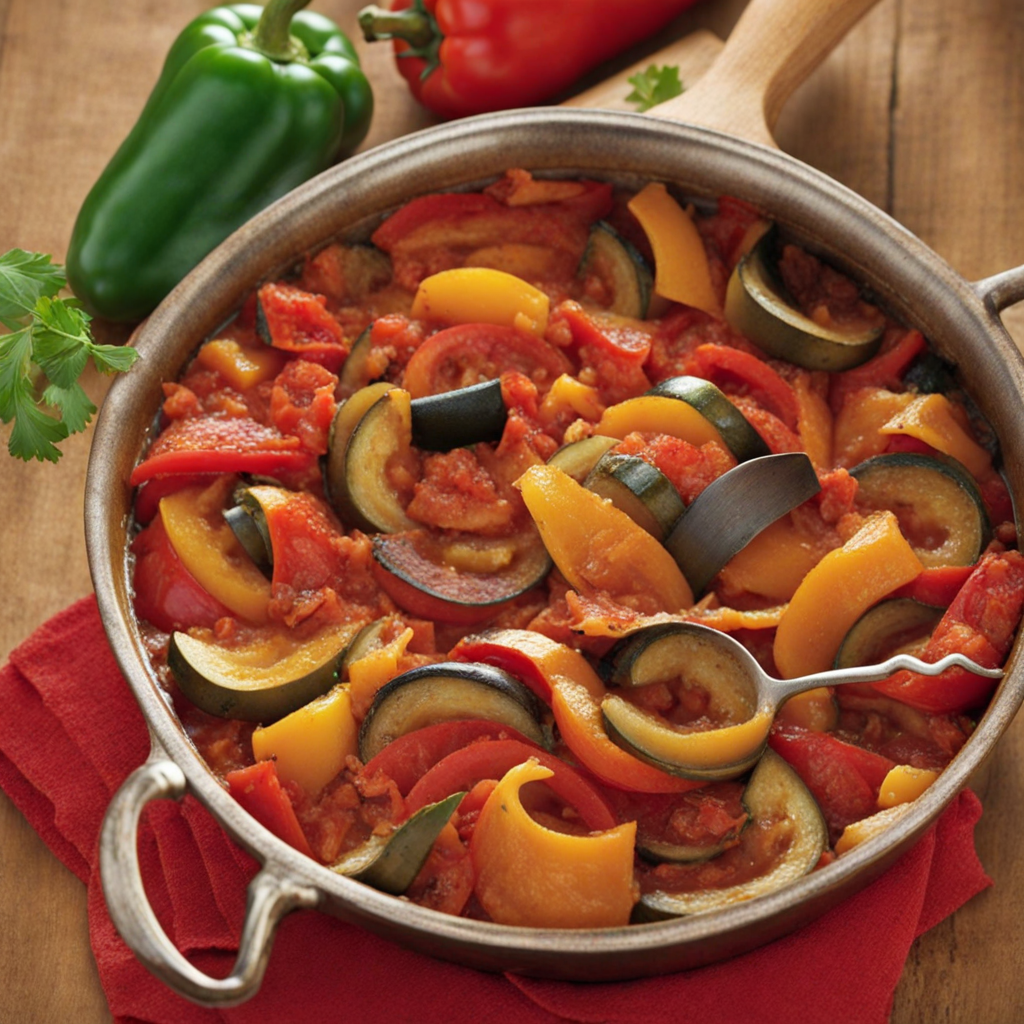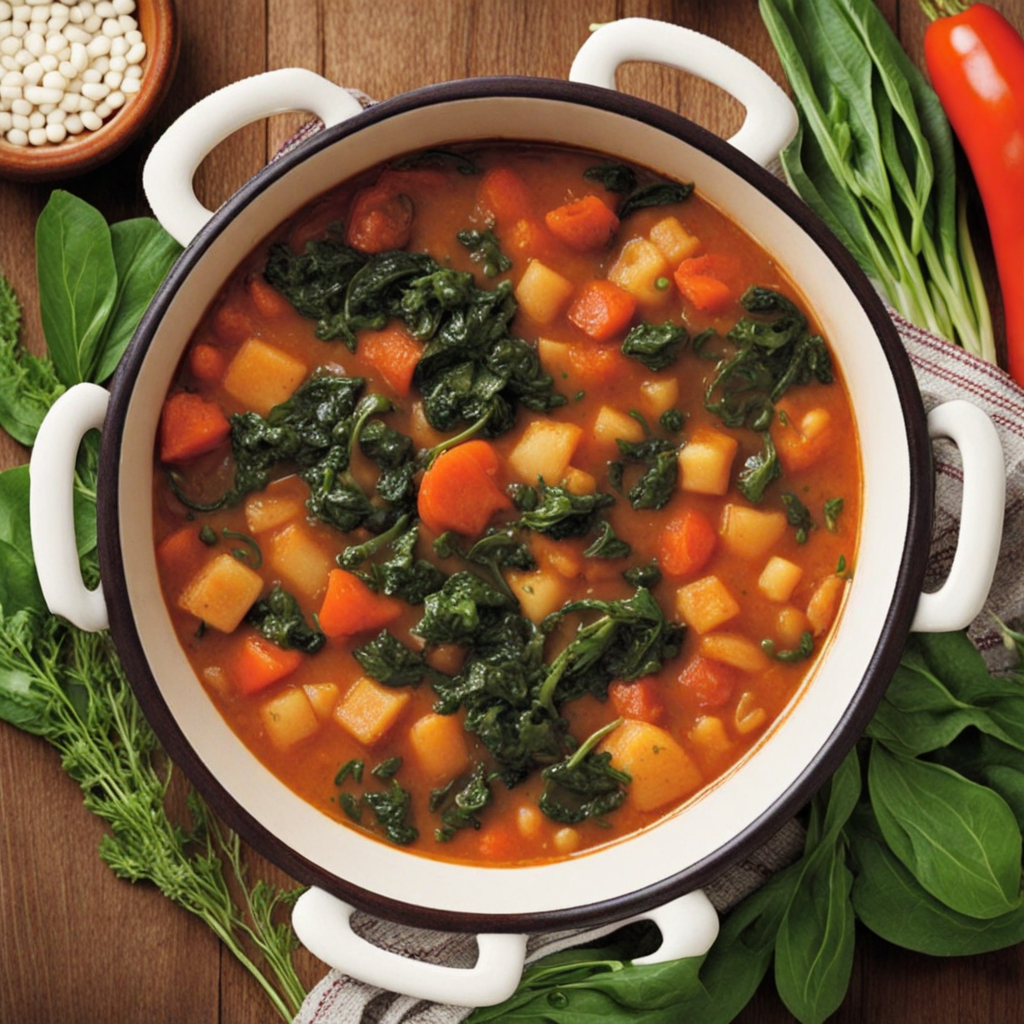Paprikás Krumpli
Paprikás Krumpli is a traditional Hungarian dish that beautifully showcases the country's love for rich flavors and comforting home-cooked meals. At its core, the dish consists of potatoes, which are the star ingredient, simmered until tender in a vibrant paprika-infused sauce. The deep red color of the paprika not only adds visual appeal but also brings a warm, slightly smoky flavor that is quintessentially Hungarian. The potatoes absorb the spices, making each bite a delightful experience of earthy goodness and warmth. To prepare Paprikás Krumpli, chunks of potatoes are typically cooked alongside onions and a generous amount of sweet Hungarian paprika, which is the heart of the dish. The onions are sautéed until golden, releasing their natural sweetness, while the paprika is added to create a fragrant base. Some variations may include the addition of sausage or bacon, enhancing the dish with a savory depth that complements the potatoes beautifully. The combination of ingredients creates a satisfying, hearty meal that is often enjoyed with crusty bread to soak up the delicious sauce. This dish is a perfect example of rustic Hungarian cuisine, often served as a main course, and is cherished for its simplicity and flavor. It is commonly enjoyed during family gatherings or as a comforting weekday meal. Each region in Hungary may have its own twist on Paprikás Krumpli, but the essence remains the same—a celebration of potatoes and paprika that invites you to savor the warmth of Hungarian hospitality. Whether you're familiar with Hungarian food or a newcomer eager to explore, Paprikás Krumpli offers a taste that is both unique and deeply satisfying.
How It Became This Dish
The History of Paprikás Krumpli: A Culinary Jewel of Hungary #### Origins Paprikás Krumpli, a beloved dish in Hungary, is a comforting potato stew that showcases the country's famed paprika, a vibrant spice derived from dried peppers. The origins of this dish are deeply rooted in Hungary's agricultural and culinary traditions, reflecting the country's history, geography, and social dynamics. The cultivation of paprika in Hungary dates back to the 16th century, when it was introduced from the New World. Initially, it was used primarily as an ornamental plant before its culinary potential was realized. By the 18th century, paprika had become a staple in Hungarian cuisine, evolving from a mere seasoning to a symbol of national identity. Paprika's rich flavor and vibrant color became integral to many traditional dishes, including goulash and halászlé (fish soup), but none more so than in Paprikás Krumpli. The dish itself, translating to "Paprika Potatoes," reflects the simplicity and ingenuity of Hungarian cooking. Its core ingredients—potatoes, paprika, onions, and sometimes sausage or bacon—are easily accessible and celebrate the agricultural bounty of the region. The use of potatoes, introduced to Europe from the Americas in the late 17th century, marked a significant shift in Hungarian diets, as they became a staple after the Great Famine of the 1840s. #### Cultural Significance Paprikás Krumpli is more than just a dish; it is a symbol of home and family for many Hungarians. Traditionally, it has been a popular meal among families, often prepared during gatherings or special occasions. The dish’s warm, hearty nature embodies the spirit of Hungarian hospitality. It is typically served with crusty bread, which allows diners to soak up the rich, flavorful sauce, further enhancing the communal aspect of the meal. The dish also reflects Hungary's complex history. Over the years, Hungary has experienced numerous cultural influences, from Ottoman occupation to Austro-Hungarian rule, and Paprikás Krumpli serves as a culinary crossroads, incorporating local ingredients while also revealing the historical layers of the nation. While it is predominantly a Hungarian dish, variations exist in neighboring countries, such as Romania and Slovakia, where similar potato stews are prepared, showcasing the shared culinary heritage of Central Europe. #### Development Over Time As Hungarian cuisine evolved, so too did Paprikás Krumpli. The basic recipe has remained largely unchanged, but regional variations and personal touches have emerged, allowing the dish to adapt to different tastes and contexts. In traditional preparations, potatoes are sliced and cooked slowly with onions and paprika, often complemented by smoked sausage or bacon for added depth. The dish is typically finished with a touch of sour cream, adding creaminess and a tangy contrast to the rich paprika. In the 20th century, as Hungary underwent significant political and social changes, the dish's popularity soared, particularly after World War II. The post-war period saw a renewed interest in traditional Hungarian cuisine, partly as a means of cultural preservation in the face of modernization and globalization. Paprikás Krumpli emerged as a quintessential comfort food, symbolizing resilience and continuity amidst change. During this time, cookbooks and culinary programs began to feature traditional recipes, making Paprikás Krumpli accessible to a wider audience. Home cooks embraced the dish, adapting it to suit contemporary tastes while maintaining its core essence. In urban areas, where lifestyles became busier, quicker versions of the dish emerged, often using pre-packaged ingredients or even introducing non-traditional elements like cream-based sauces. The 21st century has seen a revival of interest in authentic, traditional cooking methods, spurred by a growing emphasis on sustainability and local sourcing. As a result, many chefs and home cooks are returning to the roots of Paprikás Krumpli, focusing on quality ingredients and time-honored techniques. Modern variations still honor the traditional flavors, yet they may include innovative elements or presentations, reflecting contemporary culinary trends. #### Paprikás Krumpli Today Today, Paprikás Krumpli is a staple in Hungarian households and restaurants alike. It is often found on menus, celebrated as a dish that embodies the heart of Hungarian cuisine. Food festivals and culinary events frequently feature Paprikás Krumpli as a highlight, showcasing its versatility and enduring popularity. Moreover, the dish has gained international recognition, introduced to global audiences through Hungarian restaurants and cultural events. As the world becomes more connected, Paprikás Krumpli serves as a delicious ambassador for Hungarian culture, inviting people to explore the rich tapestry of flavors and traditions that define the nation. In recent years, there has been a growing interest in the health aspects of traditional dishes. Paprikás Krumpli, being primarily composed of vegetables and spices, fits well within the narrative of wholesome, nourishing food. Many home cooks are experimenting with variations that include more vegetables or alternative proteins, making the dish suitable for vegetarian or vegan diets, while still preserving its classic essence. #### Conclusion Paprikás Krumpli is more than just a dish; it is a narrative of Hungary's history, culture, and culinary evolution. From its origins rooted in the agricultural practices of the past to its status as a symbol of comfort and family today, the dish encapsulates the spirit of Hungary. As it continues to evolve and adapt to modern tastes, Paprikás Krumpli remains a cherished staple, embodying the resilience and creativity of Hungarian cuisine. Whether enjoyed in a bustling restaurant or a cozy home kitchen, this dish resonates with both locals and visitors, inviting all to experience the warmth and flavor of Hungary through its rich culinary heritage.
You may like
Discover local flavors from Hungary







